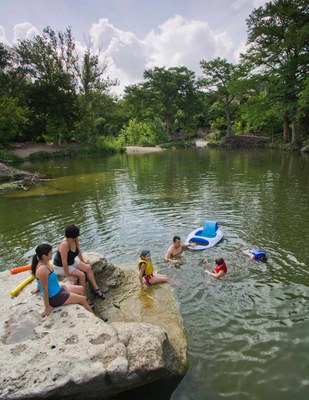Swimming Safety
Staying Safe

Please follow all water safety warnings and these swimming safety tips:
- Learn to swim. Formal lessons can help protect you and your family members from drowning.
- Closely supervise children. It only takes a moment for a child to slip below the surface. Drowning is the second leading cause of accidental death among children. Children swimming in lakes and rivers should wear life jackets.
- Stay hydrated. Take breaks, wear sunscreen, drink water and avoid alcohol.
- Never swim alone. Even experienced swimmers can get tired or experience muscle cramps. Having a buddy helps both of you stay safe.
- Assess your skills. Avoid taking chances. If you do not know how to swim, stay out of the water, even with a raft or other flotation device.
- Swim only in designated areas. We have chosen the safest and best places for you to swim.
Swimming in natural environments
- Be aware of your surroundings. Lakes, rivers and streams are natural environments. Watch for sudden drop offs, changing bottoms and unseen limbs, rocks, and other objects.
- Water can look calm on the surface, but be aware of currents under the surface. Whether you're swimming in a lake, river or ocean, underwater currents exist and can put you in danger. If you find yourself in a current, do not swim against it. Instead, swim with it until conditions are calm enough for you to swim to safety.
- Be aware of changing river conditions. Swift currents from flash flooding can happen in an instant. If you notice the water rising, turning muddy or changing, leave the area immediately.
- Watch for algae blooms. Natural water bodies may contain organisms or algae that is harmful to humans and pets; swim at your own risk. Humans and pets should avoid all contact with algae and low-flowing shallow shaded areas where blooms are most likely to occur. If you or your pet feels ill after swimming near algae bloom, seek medical help.
Wind, tide and currents all contribute to water's conditions. If you have questions or concerns about swimming conditions, ask park staff.
In case of emergency
Contact park staff or call 911 immediately if anyone is having trouble in the water.
